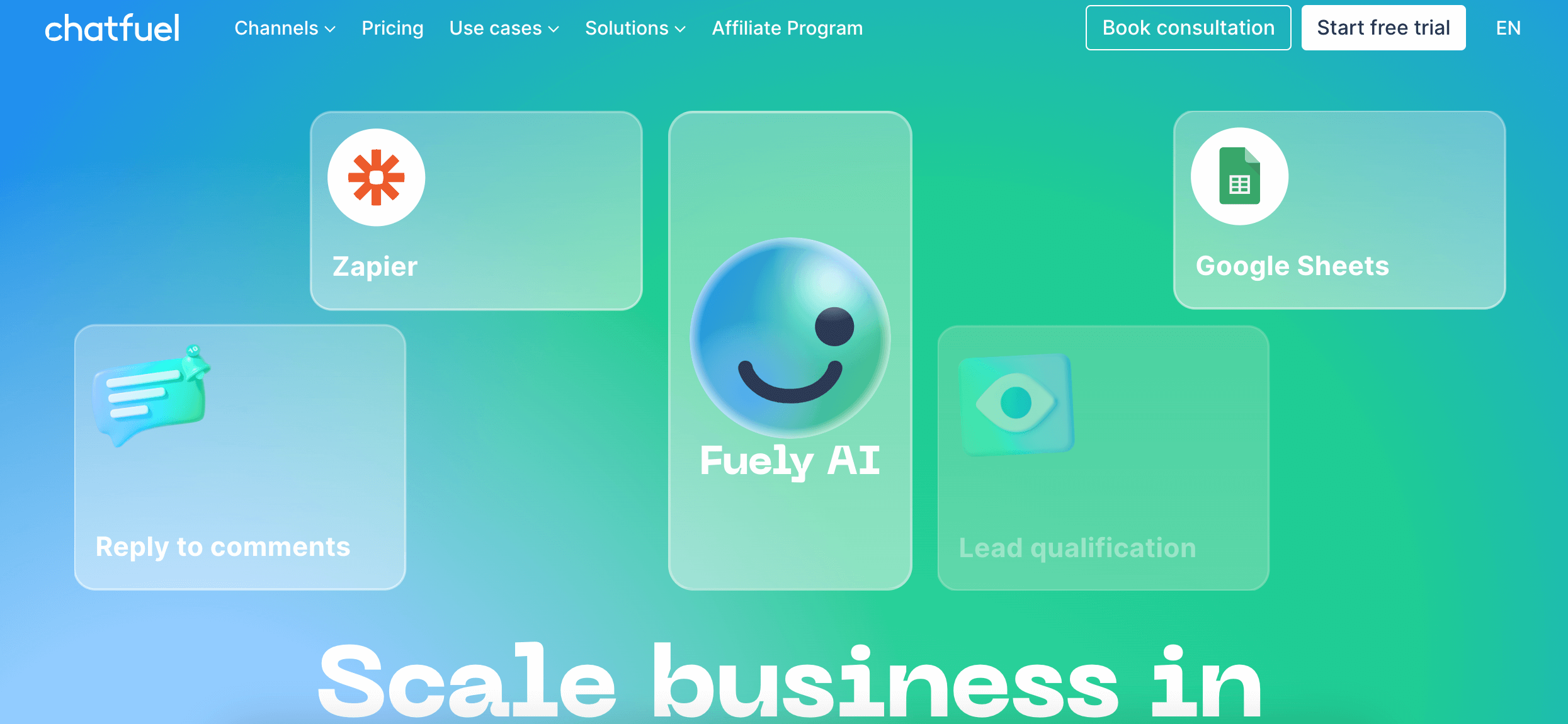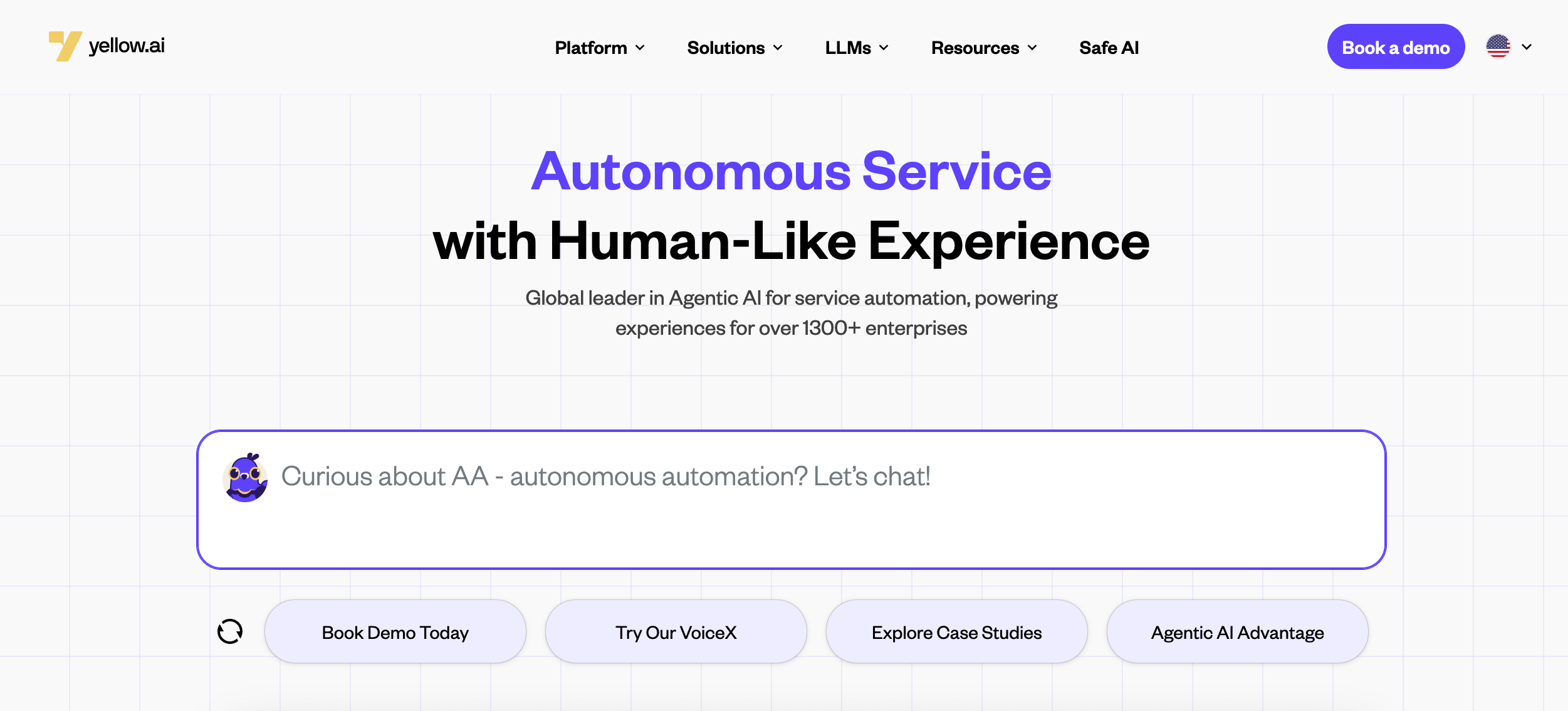E-commerce chatbot can be used to save your time by quickly answering similar customer requests that come up again and again. It helps to you manage customer issues more efficiently, respond faster all day, and maintain customer satisfaction.
Whether your company uses free or paid options, chatbots can strongly influence how you communicate with your clients.
What is an e-commerce chatbot?
An e-commerce chatbot is set up to answer your customers’ questions automatically. No human is needed, as the chatbot responds to questions, directs people to products, and can handle orders.
There are two types of chatbots:
Rule-based chatbots: Using rules relies on simple logic: “If X happens, do Y.” They’re not as expensive, but can simply answer popular questions like return procedures.
AI-powered chatbots: They can manage conversations, use learning from discussions, and provide advice according to the user.
What can an AI chatbot do for an e-commerce website?
It can do the following tasks efficiently:
24/7 Customer Support
Clients can find immediate answers to concerns about shipping, returns, and where their order is at any time of the day or night.
Order Tracking
Customers no longer have to explore emails or call to find out about their order because they can use their voice to ask, “Where’s my order?” so you don’t need to wait to receive the latest notifications.
Product Recommendations
Because of the history and purchases, intelligent chatbots can make suggestions that boost your total purchases.
Cart Recovery
Chatbots can automatically message customers with bespoke discounts if they don’t complete their purchase (which occurs 70% of the time).
Return Processing
With a chatbot involved, eligibility is checked, return labels are created, and refunds are started.
Lead Generation
With chatbots, you can obtain customer email addresses, phone numbers, and important preferences with little effort.
What are the Must-Have Features of an AI chatbot for e-commerce?
The following are the features of an AI Chatbot:
Real-Time Order Tracking
Your chatbot needs to talk directly with your order management system. Anyone checking on order #12345 should be able to get quick access to the shipper’s website, track information, and a delivery time estimate.
Abandoned Cart Recovery
An email sequence is sent when someone leaves items in their shopping cart without checking out.
Product Search and Recommendations
Chatbots must notice when a product stays in a customer’s cart and send unique messages inviting them to finish purchasing.
Human Handoff
People need to handle big problems. A good chatbot can transfer tricky chats to an agent, providing all the details from the conversation.
Multi-Channel Support
Folks contact you using your website chat, Facebook, Instagram, and WhatsApp help. Your chatbot must run on every one of these platforms.
Integration Capabilities
The chatbot must talk to Shopify, WooCommerce, your CRM, email marketing services, and payment processors.
Analytics and Reporting
To calculate ROI, you should measure the chatbot’s usage, how quickly customers find solutions, how happy they are with the service, and the sales it produces.
Top 10 AI Chatbots for E-commerce
When used correctly, a chatbot can help improve customer service, raise sales, and streamline how things work. If you’re a business, these are the 10 AI chatbots to consider in 2025.
1. Solvea
Solvea is a robust chatbot solution created for large e-commerce businesses. It excels at transforming your old catalog and incoming customer support emails into an innovative system for answering complex questions.
Its most considerable value comes to businesses that sell multiple products and support many customers, as the platform continually improves its responses based on every interaction.

Key Features:
- Omnichannel support (chat, email, live commerce)
- AI learns from each conversation.
- Seamless integration with platforms and CRMs
- Multilingual support
Pros:
- 92% resolution in under five messages
- 70% less manual workload
- Enterprise-grade security
Cons:
- Premium pricing
- It will need to be set up the first time you use it
Pricing:
With Solvea’s flexible and outcome-based pricing model (you can also use their calculator tool to estimate savings based on your ticket volume and team size), you only pay for what aligns with your goals. You can contact its sales team for a customized solution.
2. Chatfuel
Chatfuel on the Meta platform makes building chatbots for Facebook Messenger, Instagram, and WhatsApp possible. It is made for e-commerce firms, giving them simple ways to create automated customer service, suggest products to clients, and manage their sales.

Key Features:
- Drag-and-drop builder
- Templates already built for e-commerce
- Remarketing in the world of social media
Pros:
- You don’t have to learn coding to use IoT
- This solution is affordable to small businesses
- Excellent analytics
Cons:
- Only Meta-owned platforms are affected by this feature.
- AI is different from other technologies
3. 11x
11x is designed to help companies manage customer conversations to maximize their chances of making a sale. The system relies on modern machine learning to identify customers’ actions, anticipate their wishes, and recommend products exactly when they are most likely to buy.

Key Features:
- Custom product recommendations
- Advanced prediction of user behavior
- Using AI in sales development
Pros:
- Especially created to encourage visitors to sign up.
- Advances and improves without being taught
Cons:
- Calls for regular optimization.
- A steeper learning process
4. Ada
Ada is an advanced platform for conversations designed for companies that need support with many customer interactions. Ada is created so that thousands of conversations can happen simultaneously, always ensuring consistent and strong replies.
 Key Features:
Key Features:
- No-code builder
- Customizing experiences with the help of customer data
- Linking CRM with online shopping solutions
Pros:
- Scales easily
- Fantastic analytics and reporting
Cons:
- Considerable costs make it hard for small firms.
- The system isn’t always easy to set up.
5. Intercom
Intercom gives customers a single messaging experience by automatically adding chatbots to the work of human agents. One reason the platform is different is that it offers excellent processes for signing up customers and active messaging tools that can help engage them when it is essential.

Key Features:
- Proactive messaging
- Behavioral targeting
- Product tours and getting started guidance
Pros:
- Everything comes together using a single platform.
- Highly customizable
Cons:
- Complex pricing
- Small teams often find the setup steps to be too much already.
6. Gorgias

Gorgias is a platform made just for e-commerce companies, offering profound integration with Shopify and the top competitors. Unlike other tools, Gorgias was built to suit online retailers by enabling order management, automated responses to popular e-commerce topics, and showing the effects of support interactions on revenue.
Key Features:
- Multichannel supporting service that is available through one centralized department
- AI now manages over 40% of tasks that are done repeatedly.
- Logo charts for finding escalations
Pros:
- Built to support e-commerce tasks
- Integration with the platform’s core features
Cons:
- Setting up your computer takes a bit of time.
- Complete package with a premium price
7. Yellow.ai
It was developed to meet the needs of worldwide enterprises by allowing them to speak with customers in many languages and cultures. Because Yellow.ai works with over 135 languages, it knows how to interact with customers from different cultures and help international online stores succeed.

Key Features:
- Supports 135+ languages
- Handles complex conversations
- No-code builder
Pros:
- Human-like AI
- Global reach
Cons:
- Premium pricing
- It is necessary to learn how to use complex setups.
Heyday is Hootsuite’s unique social commerce tool designed to help turn conversations on social media into sales. Its main selling point is advanced visual search, so customers can simply select an image of the product they’re interested in and instantly receive suggestions from your items for sale.

Key Features:
- Product search by images
- AI-human handoff
- Tools to help manage an advertising campaign
Pros:
- Having an effective visual search
- Formatted to help with selling on social media
Cons:
- There is not much help available via email.
- High-tier pricing
9. Zoho SalesIQ
Zoho SalesIQ makes live chat and monitoring visitors simple and works well with the full range of Zoho business applications. Because of this, Connect enables businesses that use Zoho CRM, email marketing, or other Zoho solutions to have everything in one system.

Key Features:
- Behavioral triggers
- Live chat + chatbot hybrid
- A/B testing
Pros:
- Affordable
- Deep Zoho integration
Cons:
- The learning curve for full use
- The interface may overwhelm new users
10. Drift
Drift is the original conversational marketing tool that helps companies selling valuable products and B2B services reach their sales goals faster. Its technology monitors what visitors do, understands the company’s data, and detects important signals to tailor messages that push prospects toward the end of the sales funnel.

Key Features:
- AI with visitor intent targeting
- Automated scheduling and lead routing
- CRM/marketing tool integration
Pros:
- Revenue-focused
- Powerful personalization
Cons:
- B2B focus may not suit all B2C stores
- Premium cost
Best AI Chatbots for Businesses in 2025
Below is the comparison sheet for popular AI chatbots for business.
|
Chatbot |
Rating |
Free Plan |
Best For |
Pricing |
|
Solvea |
⭐ 4.9 |
none |
Enterprise-level eCommerce automation |
Custom |
|
Chatfuel |
⭐ 4.7 |
none |
Facebook & Instagram automation |
From $23.99/month |
|
11x |
⭐ 4.6 |
none |
AI-driven conversions & personalization |
From $5,000/month |
|
Ada |
⭐ 4.8 |
none |
Large and mid-sized support automation |
Usage-based pricing |
|
Intercom |
⭐ 4.7 |
none |
All-in-one messaging + onboarding |
From $29/seat/month |
|
Gorgias |
⭐ 4.6 |
none |
Shopify & e-commerce help desk automation |
From $60/month |
|
⭐ 4.6 |
yes |
Multilingual global AI chat |
Free & Premium plans |
|
|
Heyday |
⭐ 4.5 |
none |
Social commerce with visual search |
Contact for pricing |
|
Zoho SalesIQ |
⭐ 4.7 |
yes |
Zoho-integrated chat + analytics |
Free & Paid plans |
|
Drift |
⭐ 4.7 |
none |
B2B sales & conversational marketing |
From $2,500/month |
Best Practices for E-commerce Chatbots
When you add an AI chatbot to your e-commerce site, you haven’t reached the end. You must use accepted industry strategies to be sure your staff enhances the customer experience.
Here’s how to make sure your chatbot works well in your e-commerce platform:
The first step should be to know your primary objectives.
Before working on chatbots, figure out what results you hope to see. Can you lower your team’s workload, increase sales, or upgrade the shopping process? Creating exact, measurable goals will help your chatbot strategy and make it clear how successful your efforts are.
So, instead of aiming for improved customer service, try reducing the first response time by 80% or having 70% of common inquiries handled automatically. Picking clear objectives will guide how your chatbot is created, what it can do, and how you’ll measure its results.
Make sure to put Conversational Design first.
Since your brand’s voice is heard in chatbot conversations, its style must be done well. Great e-commerce chatbots are effective because they are fast and interactive, and keep your company’s personality in their replies.
Don’t use stiff or official language that separates your customers from your brand. It’s better to design conversations that sound like everyday conversations. When practical, use friendly terms, include humor when needed, and respond with an understanding of a customer’s mood.
Keep making progress with time.
Generally, the best chatbots are developed by launching and learning as you go. The chatbot will benefit from your customers’ real-time conversations and gradually become smarter. Regular log data analysis, spotting problems, and regular optimization should be done.
Conclusion
If a brand in e-commerce wants to give fast, personalized service at scale, using an AI chatbot is now required. If you want to automate your messaging, business size makes no difference: you’ll find the right chatbot in 2025. Thanks to the right chatbot, your store can simultaneously handle customer worries fast, close more sales, and support customers 24 hours a day.